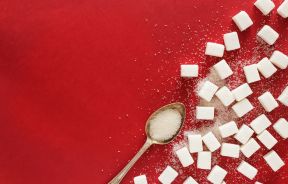Benefits Of Greek Yogurt Do Not Include Its Whey Byproduct: New Solutions Turn Waste Into Money

The benefits of eating Greek yogurt may include controlling blood pressure, promoting the health of your bones and digestive tract, and possibly even weight loss, yet there’s a real downside to the stuff. The negatives come in the form of an environmentally harmful byproduct, acid whey, created during production. Though the problem exists, scientists at the University of Wisconsin-Madison say they soon will be able to transform this waste into useful ingredients.
“The whole goal is to take this problematic mixture of stuff — acid whey — and isolate all of the various components and find commercial uses for them,” says Dean Sommer, a food technologist at the UW-Madison College of Agricultural and Life Sciences.
Both regular and Greek yogurts provide the calcium and protein and contain live active cultures to support digestion. The feature differentiating the two yogurts is Greek yogurt has been strained to remove the whey. Not only does this result in better texture, but it also produces a yogurt which has 40 percent less sugar, 38 percent less sodium, and more than twice the amount of protein as regular yogurt. It also contains less lactose and fewer carbs. When shopping, you must be careful, though; yogurts labeled “Greek style” are not the same (and possibly not as healthy) as authentic Greek yogurts strained to produce what many believe to be a better overall product and unfortunately acid whey as well.
Modern Farmer describes acid whey as “a thin, runny waste product that can’t simply be dumped” due to the fact that when it decomposes, it becomes toxic to the environment. Essentially acid whey reduces oxygen in streams and rivers, ultimately destroying the aquatic life there. In recent years the discharges into the environment of cheese whey, which is closely related to Greek yogurt’s byproduct, have killed tens of thousands of fish across the country.
Adapted Technology
While high-value whey protein powders — featured in muscle-building products — can be extracted from the byproduct of cheese production, scientists have not yet found a way to work with acid whey. Though it's 95 percent water, some of the solids in acid whey, which include lactose, lactic acid, calcium, phosphorus and galactose, make it more difficult to process. Essentially, it turns into a sticky mess when it's dried.
And so this is where the scientists at UW come in: they are developing technologies with high-tech filters referred to as membranes to separate out the various components of acid whey. The new process allows them to get some value-added ingredients out at the other end. In particular, they are focusing on lactose, because this is an ingredient food companies will pay to acquire if it appears in food-grade form.
While the process of separating out every usable ingredient has not yet been finalized, a number of companies have begun to implement at least the lactose-isolating technology in their commercial plants. When the process is perfected, acid whey will be stripped of its ingredients until the single remaining byproduct will be water.
Sales of yogurt amounted to $7.3 billion at year-end November 2, 2014; this signifies a 3.41 percent total increase over the previous 52-week period, according to Food Navigator USA. Greek yogurt, as calculated by Modern Farmer, accounted for a $2 billion chunk of that industry. A solution to this environmental problem will surely be welcome.



























